Mithraism, an ancient mystery religion, was once practiced throughout the Roman Empire, with intriguing rituals and theological beliefs that resonated with people from diverse regions and backgrounds. Originating in Persia, the faith centered around the worship of Mithras, a figure often identified with the Sun, and it existed alongside other prominent religions, including emerging Christianity. The spread of Mithraism across the Roman Empire illustrates the complex cultural and religious dynamics of the period, deeply influencing societal structures and personal spirituality.
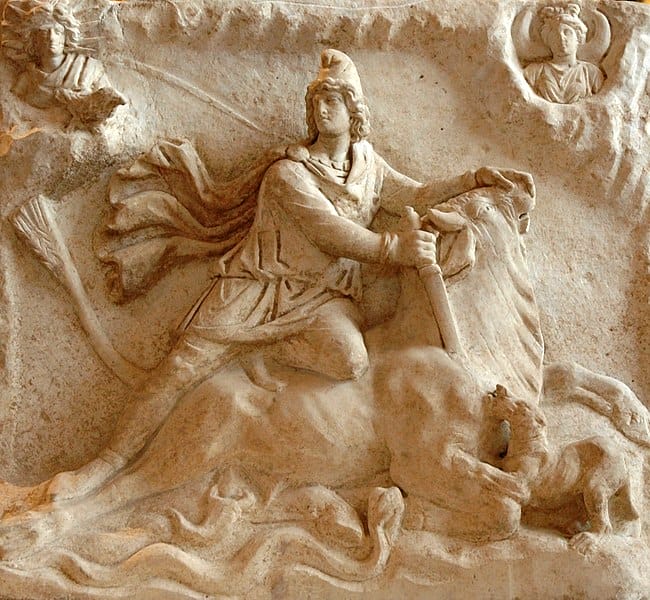
Over time, Mithraism developed unique practices and symbolism, with a significant emphasis on fraternity, moral discipline, and the cycle of celestial bodies, reflecting its Persian roots and adaptation in Roman contexts. Mithraic sites, often semi-subterranean temples known as mithraea, featured distinct art and iconography, illuminating a cosmology that was rich, symbolic, and underpinned by the interplay of light and darkness. Despite the once-strong presence of Mithraism, it eventually waned as the Roman Empire’s state religion shifted to Christianity, leading to its decline.
Key Takeaways
- Mithraism was a mystery religion that revered Mithras and spread widely across the Roman Empire.
- The faith featured esoteric rituals, moral teachings, and a unique cosmology, often centered around solar symbolism.
- Although once popular, Mithraism gradually declined, especially as Christianity became dominant in the Roman world.
Historical Origins and Spread
Mithraism traces its roots to Persian mythology before undergoing significant transformation and diffusion throughout the Roman Empire. Cult practices honoring Mithras morphed as they intersected with new cultural and regional influences, ultimately extending from Iran to the furthest borders of Rome’s domain.
Persian Roots
Mithras originates as a deity in Persian mythology, where he was known as a judicial figure and guardian of oaths. The early Persian religion recognized Mithras as a Persian God associated with light and truth. This divinity’s worship likely influenced later Roman practices, although the connection between the Iranian ideologies and Roman Mithraism involves a complex evolution. Scholarly discourse suggests that the transition from Persian worship to a distinct Roman form might have occurred through intermediaries such as the Cilician Pirates, who had their own interpretation of the Mithras figure.
Adaptation and Expansion into Rome
Roman Mithraism, which differs notably from its Persian counterpart, started to take shape by the 1st century BC. It adapted the figure of Mithras into a distinctive iconography, often depicted as slaying a bull. This resulted in the creation of the Cult of Mithras, a mystery religion that would appeal to the Roman military and elites. Moreover, the archaeological evidence strongly implies the presence of Mithraic rituals within Roman forts and settlements, demonstrating an adaptation that emphasized loyalty and camaraderie amongst the worshippers.
Influence and Reach across the Roman Empire
The Mithraic religion spread extensively through the trade routes, military campaigns, and movements of peoples. Its influence permeated various Roman territories, from Syria to the borders of Britain. Temples dedicated to Mithras, known as Mithraea, have been found along the Rhine and Danube rivers, evidencing the cult’s reach and the religion’s integration into local communities. Despite the absence of extensive written records, the geographical dispersion and material culture, such as statutes, reliefs, and temple remains, indicate the far-reaching impact of Mithraism across the empire. The consistent archaeological findings are silent witnesses to the extensive network and influence of Mithraic practices.
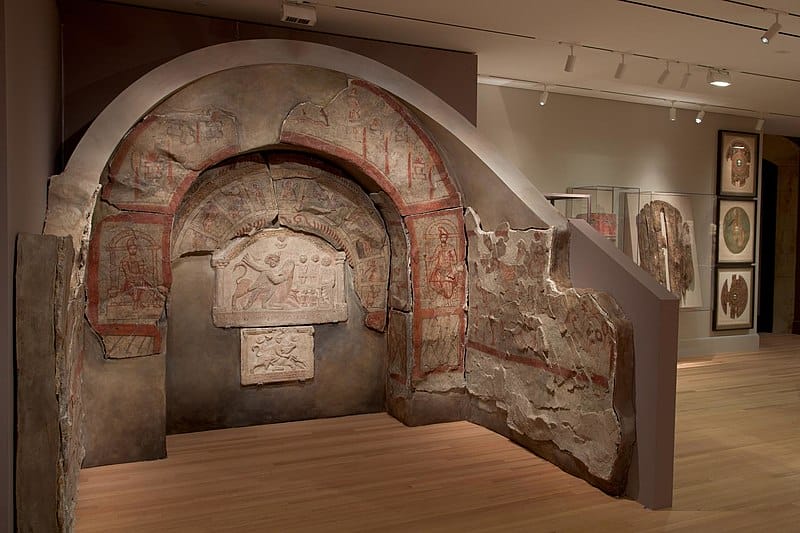
Rituals and Practices
Mithraism encompassed a range of rituals and practices that were integral to its mystery cult. It had a unique initiation ceremony and a hierarchical system, and its worship was carried out in specifically dedicated spaces.
Initiation and Hierarchical Structure
Initiation into the Mithraic Mysteries was a multi-stage process that symbolized a spiritual journey and enlightenment. Initiates, often soldiers, underwent a series of rituals, including the Tauroctony, or the symbolic slaying of a bull, which was a central piece of Mithraic iconography. The hierarchical structure within Mithraism resembled military ranks, advancing initiates through different levels of knowledge and responsibility.
- Stages of Initiation:
- Catechumen
- Soldier of Mithras
- Lion
- Persian
- Sun Courier
- Father
Each stage had its own set of rituals and tests, becoming progressively more challenging and secretive.
Worship and Sacred Spaces
It is already mentioned that the worship within Mithraism took place in underground temples called mithraea, echoing the cult’s connection to the cave where Mithras was said to have slain the bull. These spaces were often small and intimate, emphasizing the esoteric and exclusive nature of the Cult of Mithra. The sanctuaries were adorned with iconography of the Tauroctony, and altars were set for offerings and communal ceremonies that echoed the mythical banquet of Mithras and the Sun god.
- Mithraea Features:
- Altar at one end
- Bench seating along the walls
- Frescoes or reliefs depicting the Tauroctony
The central act of worship was the reenactment of the sacred meal between Mithras and the Sun, combining elements of feasting with symbolic acts of communion.
Art and Symbolism
Mithraic art is characterized by specific depictions of cosmological symbols and the deities associated with the cult. The iconography of Mithras and the deeper meanings conveyed through these images played a significant role in the religious practices and beliefs of its followers.
Iconography of Mithras
Mithraism is intricately linked with certain symbols and figures that appear across its artistic representations. Central to this is the figure of Mithras, typically shown wearing a Phrygian cap, symbolizing his status as a deity from the East. He is often depicted slaying a bull, an act rich with symbolic meaning. This key scene, known as the tauroctony, also features other figures, including a dog, a snake, a raven, and a scorpion – each engaging with the bull and bearing its own significance. Additionally, celestial symbols such as the sun, moon, and stars are recurrent, indicating a cosmological dimension to the religion.
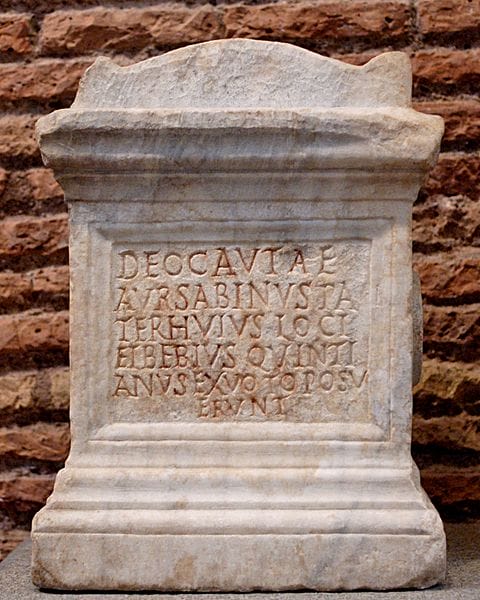
Meaning Behind Mithraic Imagery
The meaning behind Mithraic imagery is complex and multilayered. The bull that Mithras kills may represent the moon, bringing life through its sacrifice, with the scorpion typically attacking its testicles, possibly symbolizing rebirth. The sun, often associated with Mithras, relates to the god Sol Invictus, with whom Mithras forms a pact in many depictions, highlighting their intertwined relationships.
The animals in the tauroctony, such as the dog and raven, are thought to reflect aspects of the initiation and hierarchy within the Mithraic communities. The inclusion of torches in some scenes suggests the dichotomy of light and dark and may also signify the guidance of initiates through their spiritual journey.
Mithraic art also employs the imagery of the lion, which can be found in various statues and reliefs, often holding keys or sometimes associated with the wind, hinting further at the multifaceted nature of these cultic symbols.
Theological Beliefs and Cosmology
Mithraism encompasses a complex theological structure marked by a rich cosmology. The faith’s deities and celestial hierarchy reflect an intricate belief in an ordered universe.
Comparisons with Contemporary Religions
Sun God and Sol: The deity Mithras is often associated with the Sun God, known also as Sol in the Roman context. Mithras’s role in the heavens is multifaceted, embodying not just the sun but also the ideas of illumination and truth within the order of the cosmos.
Zoroastrian Influence: Mithraism appears to draw parallels with Zoroastrian beliefs through its dualistic elements. They share the notion of a cosmic struggle between good and evil, although the interpretative link is complex and characterized by both similarities and divergences in their theological concepts.
The Banquet: A key element is the Banquet, which symbolizes the feasting in the heavens and reflects the ritual fellowship among Mithraists mirroring that of the divine entities.
Father: The term Father is used within the cult to signify a supreme figure in the Mithraic pantheon, indicating a hierarchical structure of divine entities presiding over the universe.
Pagan Context: Set within the broader Pagan environment of the Roman Empire, Mithraism distinguished itself with a unique identity, though it absorbed and adapted some practices and beliefs from the surrounding religious milieu.
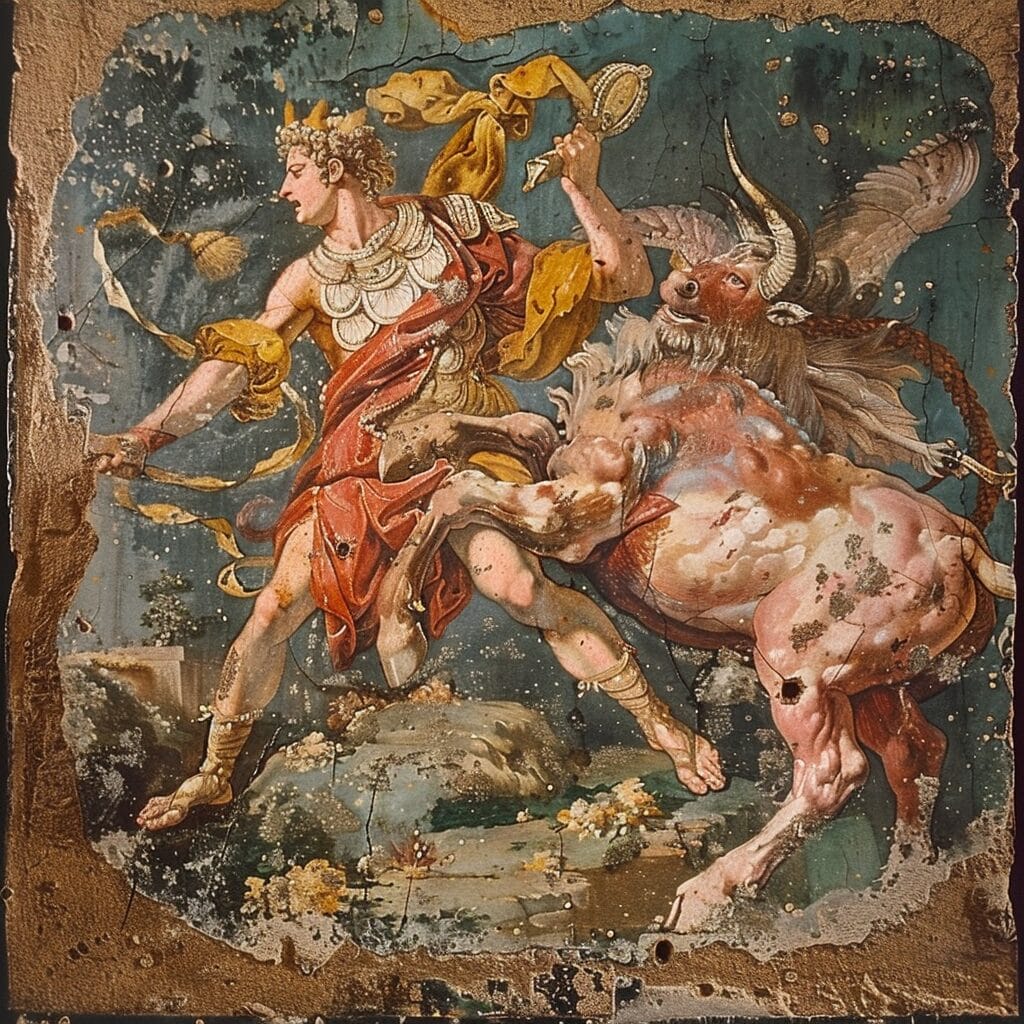
Legacy and Decline
The decline of Mithraism and its subsequent legacy were shaped by various social, political, and religious changes in the late Roman Empire. These impacts continue to influence contemporary perspectives on ancient religions.
Factors Contributing to Mithraism’s Decline
Political Shifts: The endorsement of Christianity by Emperor Constantine was pivotal. With the Edict of Milan in 313 AD, there was a gradual shift towards Christianity as the state religion of the Roman Empire. This tolerance and later preference for Christianity negatively impacted the patronage and practice of Mithraism.
Religious Competition: Christianity’s rise often directly contradicted the tenets of Mithraism. As the former grew in influence and number, the latter saw a steady decline. The Christian Church’s organized structure and community appeal might have also factored into Mithraism’s waning popularity.
Economic and Military Factors: The Roman Empire was experiencing considerable internal strain. Economic hardships and military setbacks contributed to the declining support for traditional cults and mystery religions, including Mithraism.
Cultural Integration: Elements of Mithraic worship, such as the solar deity Sol Invictus, were absorbed into the prevailing religious practices. This syncretism made distinguishing Mithraism as a separate tradition increasingly difficult.
Influence on Later Cultures and Religions
Art and Architecture: Remnants of Mithraea, places of worship for Mithraism, give insight into the religious iconography and architecture that influenced later structures. Although direct lineage is often debated, common motifs of light and darkness are seen in Christian symbology.
Liturgical Practices: Some scholars suggest that the communal meals and initiatory practices of Mithraism may have influenced similar Christian practices. Concepts of fellowship through shared meals hold a place in Christian liturgy.
Philosophical and Theological Ideas: While direct influence is complex to trace, the Roman world, during the decline of Mithraism, was a melting pot of ideas. Thus, it is conceivable that Mithraism contributed to the spiritual milieu from which Christian theology drew.
Contrasting Legacies: While Mithraism largely receded from practice, elements can be found in the broader religious landscape of the Roman world. Christianity, however, emerged as a dominant force, shaping the course of Western civilization and culture.
Through a combination of external pressures and internal transformations, Mithraism’s legacy is one interwoven with the fabric of the Roman Empire’s transition and the ascent of Christianity.
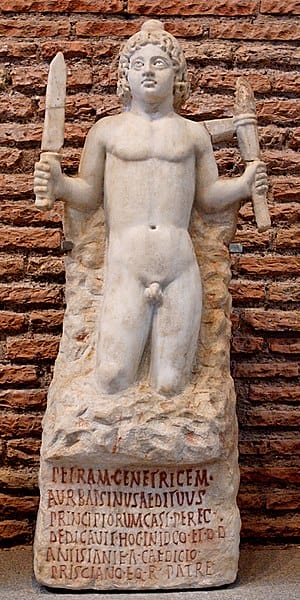
People Also Ask:
What are the core beliefs and practices of Mithraism?
Mithraism was characterized by the veneration of Mithra, originally a figure in Persian mythology who later became central to a Roman mystery cult. Its beliefs pivot on themes of light, truth, and moral integrity. Their practices involved initiatory rites, communal meals, and observing the celestial order as part of their worship.
In what ways do the symbols of Mithraism carry significance?
Symbols in Mithraism such as the bull, the sun, and the banquet hold profound meanings, serving as allegories for celestial events, the passage of time, and the moral struggle between good and evil. These symbols were integral in ritualistic practices and expressed the theology of the cult.
How has Mithraism influenced modern religions and contemporary practices?
Mithraism’s concepts of dualism, afterlife, and salvation left a discernable imprint on later religious beliefs and liturgies, particularly within Western esoteric traditions. Scholars have noted parallels in symbolism and structure that have permeated into various modern spiritual outlooks.
What differences can be identified when comparing Mithraism with Christianity?
Despite superficial similarities in iconography and ritual between Mithraism and Christianity, the two religions diverge significantly in theology, origin stories, and the nature of their worship. Mithraism’s focus on astrological elements and secret initiations stands in contrast to the missionary and textual approach of Christianity.
How is Mithras represented or referenced within biblical texts?
There are no direct references to Mithras within the canonical biblical texts. However, the time period of Mithraism overlaps with early Christianity, which has led to scholarly discussions on the potential indirect influence of Mithraic symbolism on the development of Christian iconography and narratives.
What connections exist between Mithraism and Hinduism?
Connections between Mithraism and Hinduism are found in the shared Indo-Iranian roots where deities bearing the name Mithra or Mitra appear. These deities are associated with oaths, covenants, and the social order in both religious traditions, pointing towards a shared cultural heritage.
Hello, my name is Vladimir, and I am a part of the Roman-empire writing team.
I am a historian, and history is an integral part of my life.
To be honest, while I was in school, I didn’t like history so how did I end up studying it? Well, for that, I have to thank history-based strategy PC games. Thank you so much, Europa Universalis IV, and thank you, Medieval Total War.
Since games made me fall in love with history, I completed bachelor studies at Filozofski Fakultet Niš, a part of the University of Niš. My bachelor’s thesis was about Julis Caesar. Soon, I completed my master’s studies at the same university.
For years now, I have been working as a teacher in a local elementary school, but my passion for writing isn’t fulfilled, so I decided to pursue that ambition online. There were a few gigs, but most of them were not history-related.
Then I stumbled upon roman-empire.com, and now I am a part of something bigger. No, I am not a part of the ancient Roman Empire but of a creative writing team where I have the freedom to write about whatever I want. Yes, even about Star Wars. Stay tuned for that.
Anyway, I am better at writing about Rome than writing about me. But if you would like to contact me for any reason, you can do it at contact@roman-empire.net. Except for negative reviews, of course. 😀
Kind regards,
Vladimir
